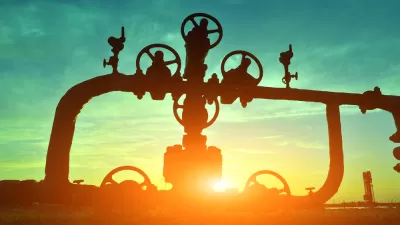In order for new coal power plants to meet the EPA's new rules for reduced emissions, they will have to rely on unproven carbon capture and storage (or sequester) technologies, putting the legality of the rule in doubt.
Matthew L. Wald and Michael D. Shear delve into the largely untested technology that plays a pivotal role in President Obama's plan to transform the number one source of U.S. greenhouse gas emissions, and the crucial role it plays in reducing carbon emissions from new coal power plants.
As noted here last Friday when EPA Administrator, Gina McCarthy, released the long-awaited, 2013 Carbon Pollution Standard for New Power Plants that "would limit new gas-fired power plants to 1,000 pounds of carbon dioxide emissions per megawatt-hour and new coal plants to 1,100 pounds of carbon dioxide. Industry officials say the average advanced coal plant currently emits about 1,800 pounds of carbon dioxide per megawatt-hour", Wald and Shear write.
Once the rule is in place, new plants would be required to capture carbon dioxide from the smokestacks and “sequester” it underground. Officials said the regulation could be completed by the fall of 2014.
In order to reduce emissions by almost 40%, coal power plants must use carbon capture & storage technologies. Is "CCS" technology readily adoptable by the coal power plant industry? Wald and Shear write that "to protect industries from pie-in-the-sky requirements, current law limits what rules the agency can make."
E.P.A. rules sometimes demand technological advancements, but the goals that the agency establishes have to be met by techniques that existing law describes as “adequately demonstrated.”
According to the writers, "(t)hree systems of carbon capture are in various stages of development. The most common is to convert coal into a mixture of hydrogen, carbon monoxide — which in this context is a fuel, not a pollutant — and carbon dioxide, and to recover the carbon dioxide at two different stages."
Are existing power plants using this technology? Wald and Shear write that "Ms. McCarthy cited four such projects. She told reporters on Friday that the draft rule was based on “technologies that are already entering the market and being constructed in plants today.” But the four she referred to in the committee hearing ranged from under construction to planned. None of them would sequester the carbon dioxide, and all would sell it".
Previously we have described CCS applications in Indiana, Wisconsin, and California.
Unpropitious news on CCS technology came from Norway the same day that EPA announced their new rule, regarding proposed plans to deploy CCS on an oil refinery. It was abandoning its carbon capture technology that it had announced in 2007.
"At both the national and international level, the development of technologies to capture and store CO2 has taken longer, been more difficult and more costly than expected," Oil and Energy Minister Ola Borten Moe told reporters.
FULL STORY: Challenges Await Plan to Reduce Emissions

Planetizen Federal Action Tracker
A weekly monitor of how Trump’s orders and actions are impacting planners and planning in America.

Maui's Vacation Rental Debate Turns Ugly
Verbal attacks, misinformation campaigns and fistfights plague a high-stakes debate to convert thousands of vacation rentals into long-term housing.

Restaurant Patios Were a Pandemic Win — Why Were They so Hard to Keep?
Social distancing requirements and changes in travel patterns prompted cities to pilot new uses for street and sidewalk space. Then it got complicated.

Charlottesville Temporarily Has No Zoning Code
A judge ordered the Virginia city to throw out its newly revised zoning code, leaving permitting for new development in legal limbo.

In California Battle of Housing vs. Environment, Housing Just Won
A new state law significantly limits the power of CEQA, an environmental review law that served as a powerful tool for blocking new development.

Boulder Eliminates Parking Minimums Citywide
Officials estimate the cost of building a single underground parking space at up to $100,000.
Urban Design for Planners 1: Software Tools
This six-course series explores essential urban design concepts using open source software and equips planners with the tools they need to participate fully in the urban design process.
Planning for Universal Design
Learn the tools for implementing Universal Design in planning regulations.
Heyer Gruel & Associates PA
JM Goldson LLC
Custer County Colorado
City of Camden Redevelopment Agency
City of Astoria
Transportation Research & Education Center (TREC) at Portland State University
Jefferson Parish Government
Camden Redevelopment Agency
City of Claremont



























